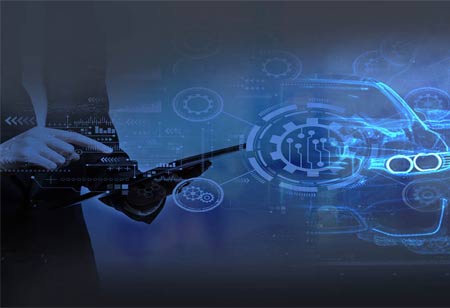THANK YOU FOR SUBSCRIBING
THANK YOU FOR SUBSCRIBING
Be first to read the latest tech news, Industry Leader's Insights, and CIO interviews of medium and large enterprises exclusively from Auto Tech Outlook

By
Auto Tech Outlook | Thursday, December 29, 2022
Stay ahead of the industry with exclusive feature stories on the top companies, expert insights and the latest news delivered straight to your inbox. Subscribe today.
The development of lender networks made it possible for fax-based credit applications to be replaced by online ones, speeding up processing and enhancing accuracy.
Fremont, CA: Digital retailing solutions are getting accepted as customer familiarity with online automobile purchases increases and merchants strive for more efficient operations. The development of finance and titling, two crucial components of the digital automobile purchase process, started more than 20 years ago. Predictive models have got developed to assist lenders in setting criteria for better loan decision-making. The development of lender networks made it possible for fax-based credit applications to be replaced by online ones, speeding up processing and enhancing accuracy. Additionally, shops can now redirect resources to high-value, profitable operations thanks to the automation of financing and titling.
The old saying goes that history forecasts the future. Automation and financial innovations that we have seen in other sectors are also present in the automobile sector. Let's investigate how that automation functions and what is ahead.
• Building a zero friction, consumer-focused buying intention
A well-designed, smart automobile e-commerce website should effortlessly lead the customer through the selection and purchase process, assisting them in deciding what they want to buy and how they want to buy it. Search defaults must direct users to the information they want and offer suggestions for alternatives and other possibilities based on predefined rules.
For the user to safely observe - and alter - tailored rates, trustworthy payment information, and aftermarket products appropriate to their wants and vehicle selections, a completely automated automobile buying experience should enable credit pre-qualification based on little input.
• Improving efficiency and profitability
Fully automated ecommerce speeds up transactions from the initial point of contact through the delivery of the car for merchants by bringing speed, accuracy, and compliance to the most time-consuming aspects of each transaction.
So, how do AI and automation improve the sales process? Machine learning models are first trained using retail-specific information, such as trade records and customer data. Following that, these models may forecast interest rates that will likely be well-received by consumers while also optimizing dealer profitability and transaction liquidity. AI models may also choose the appropriate aftermarket items based on vehicle information, deal structure, and geo-specific data to boost aftermarket product attachment and profitability.
Check Out This: Top Retail POS Solutions Companies
Modern technology accelerates F&I operations by removing a time-consuming workforce from tasks needed to close the contract. Here, established lender automations and recent store automations connect. Artificial intelligence forecasts a lucrative rate — particular to the customer, vehicle, and deal structure — that a lender is likely to purchase using only a mild credit pull. The customized deal structure expedites the F&I procedure by guaranteeing the maximum likelihood of approval while maximizing the retailer's profit. It also aids in the deal's completion without the involvement of the retailer or lender.
Automated fraud prevention measures like face recognition and multifactor authentication assist in confirming the legitimacy and identity of the automobile buyer. An automated e-commerce system may submit a complete and correct contract package prepared for financing once the contract signing procedure gets finished.
 Copyright © 2025 AutoTech Outlook. All Rights Reserved | Privacy Policy | Subscribe | Sitemap | About us | Feedback Policy | Editorial Policy
Copyright © 2025 AutoTech Outlook. All Rights Reserved | Privacy Policy | Subscribe | Sitemap | About us | Feedback Policy | Editorial Policy 



